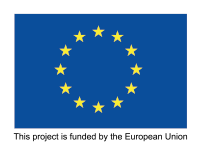
As STGM, we organize offline and online capacity building trainings for various needs of CSOs. Our trainings are based on open call method. You will be able to receive information on applications, content and other details of our trainings through our announcements. For detailed information on available trainings, please follow up our announcements on STGM website and e-bulletin.
You can contact egitim@stgm.org.tr for your further questions about our trainings.
You can reach the list of associations in Turkey through the database of Directorate General for Relations with Civil Society, Ministry of Interior of Turkey or dernekara.com website.
The name of your organization is one of the crucial components of your organizational identity. In addition to your logo, motto and organizational values, the name of the CSO is an important point that creates differences amongst other NGOs and lets people know about your mission.
The name of a CSO is advised to be striking and catchy and catchy and able to render the organization's mission to people in a concise manner.
There is no single formula for finding a name for the organization. For example, followings can be considered for giving a name to the organization;
- Descriptive name,
- Meaning based name,
- Generic name,
- Unique name,
- Abbreviations.
When a position is available at the STGM, we make an announcement on our website. Additionally, we also share vacancies of other organizations via our website, if they share them with us. Therefore, we recommend you to follow our website.
We wish you luck and success in your job search.
Within the scope of direct management modality of the EU, FSTP mechanism is described as “FSTP is a financial mechanism whereby the EU provides funding to one organization as a grant applicant which, in turn, regrants funding to a number of smaller CSOs, grassroots or community-based organizations, even individuals.” in the European Commission’s publication, Enhanced Outreach to Civil Society Organizations: A Collection of Good Practices of Financial Support to Third Parties in the Neighbourhood and Enlargement Countries, TACSO, 2021.
You can reach above-mentioned publication from here.
While the most common form of FSTP is sub-granting, FSTP can take the form of many different types of support, including monetary awards, individual financial support, scholarships, covering for operating costs, etc. FSTP may also take the form of “unconditional cash transfers” where no specific activities are supported. “Unconditional” means that FSTP is given without any specific goal other than helping the final recipients, e.g., to support human right defenders, scholarships to facilitate mobility, allowances to refugees, etc.
Besides, the most common forms of subgrants can be considered as “core-funding” and “project funding”. Core-funding is financial support that covers the basic, “core” organisational and administrative costs of a CSO. But, project funding is financial support focused on the implementation of a series of activities, aimed at bringing about clearly specified objectives within a defined period of time and with a defined budget. (Enhanced Outreach to Civil Society Organizations: A Collection of Good Practices of Financial Support to Third Parties in the Neighbourhood and Enlargement Countries, TACSO)
When proposing FSTP mechanism as a component of an EU supported intervention/projects, it’s advised to reflect on;
|
FSTP Integration |
How the FSTP component integrates within the whole intervention/project. |
|
Information on Beneficiaries |
How to gather information on potential beneficiaries and ensure a participatory approach in designing the intervention/project. |
| Capacity and Resources | The management capacity and respıurces of the implementer organization. |
| Timeframe | The necessary time for a successful implementation of the FSTP mechanism. |
| Call(s) abd Selection Process | The design of the FSTP component calls and selection procedures. |
| Coaching and Mentoring | Coaching and mentoring: capacity development may need to be provided to FSTP beneficiaries on issues such as project development, budget preparation, monitoring and reporting. |
|
Monitoring and Reporting |
Monitoring and reporting – how to monitor and report on the impact of FSTP beneficiaries. |
| FSTP Management Budget | The budget required for managing the FSTP. A significant percentage of the budget (up to 30-40%) may be required for monitoring, supervising and reporting on FSTP. |
| Knowledge Transfer | Knowledge transfer: If applicants are not local organisations, it would be prudent to include a local co-applicant and foresee a strategy to transfer knowledge to build the local partner’s capacity in managing FSTP.* |
The exchange rate regime to be exercised in financial reports for the FSTP component is the regime that will be used for the entire project. Article 7 of the "Special Conditions" of the contracts of sub-grant implementer organizations, signed with the contract authority (EU Delegation to Turkey) specifies which exchange rate to be exercised in the entire project.
Likewise, it is recommended that the exchange rate regime of payments in TL or other currencies (except EUR), made by sub-grant beneficiaries should be stated in the contracts to be made between the sub-grant implementer organization and the sub-grant beneficiaries.
When designing call and selection procedures of FSTP mechanism as a component of an EU supported intervention/projects, it’s advised to reflect on;
| Targeted beneficiaries | The type of beneficiaries to be targeted through FSTP (which should always be in line with the initial Guidelines for Applicants, the Description of the Action (DoA) agreed with the EU or any other relevant framework agreed with other donors). |
| Procedure to be used | Consider the objective of the FSTP, the targeted beneficiaries and the procedure to be used (open call, closed call, direct awards or a mix of approaches). Sub-grant implementing organizations should have a strong justification for their proposed approach and its compliance with the FSTP guiding principles. |
| Application forms and required documentation | The application forms and required documentation, taking into account FSTP beneficiaries’ capacities and any donor/contracting authority requirements that may need to be passed on to their beneficiaries. |
| Сommunication approach | The communication approach to be used, which will reflect the chosen type of procedure. Different approaches will be required for an open call aiming to reach out to as many organisations as possible versus a restricted call dedicated to supporting organisations in sensitive political contexts or the members of a network. |
| Language of the calls | The language of the calls. Language barriers can reduce the outreach of FSTP/sub-grant calls and making calls and application documents/procedures available in local languages may increase the outreach to local organisations. |
| Channels to submit proposals | Channels to submit proposals: Online submissions are generally easier to manage. In more restrictive and difficult environments they can be supplemented by offline submissions (including by phone). |
| Calls may constitute capacity development tools | Calls may constitute capacity development tools: As a minimum, feedback to non-selected applicants can help those organisations or individuals improve their future proposals. |
| Selection processes and criteria | Selection processes and criteria constitute a starting point for building trust in communities |
You can find a sample contract here (in Turkish) for services of independent consultants or experts. You are able to revise it in accordance with your requirements.
Yes, you are able to reach a sample timesheet from here.
Article 6 of the General Conditions of contracts indicates requirements and procedures regarding communication and visibility activities in EU supported interventions/projects. As specified in article 6.1 of the General Conditions, "Communication and Visibility Guidelines in EU Financed External Actions 2018" explains procedures to be followed for EU supported interventions/projects.
Guidelines on Developing a Communication Strategy, TACSO, 2016 will assist to for developing communication strategies and plans within the scope of EU supported projects.
PADOR (Potential Applicant Data On-Line Registration) is the online system in which organizations, who are potential applicants to calls for proposals, register and update regularly information about their profile (legal, financial, etc.).
For those who have not a PADOR registration yet, the informative videos are available under the title of “Videos for EU Supported Projects” of STGM YouTube channel. Besides, PADOR User Manual V.2.2.3 can reachable here.
Where the relevant call for proposals allows for the work performed by volunteers to be considered as acceptable co-financing, such co-financing must be considered as eligible personnel costs in accordance with articles 181, 186 and 190 FR, and must take the form of unit costs.
These unit costs will be fixed by the contracting authority and provided in the call for proposal. The value of the volunteers' work may comprise up to 50% of the co-financing, the latter corresponding to the part not financed by the EU contribution.
This type of costs must be presented separately from other eligible costs in the estimated budget. The value of the volunteer's work must always be excluded from the calculation of indirect costs. Any eligible costs incurred by the beneficiary linked to the work of the volunteer, for example travel and accommodation, may be claimed separately as eligible costs.
For more information, please check out Companion
The capacity development is the process through which individuals, organizations and societies obtain, strengthen and maintain the capabilities to set and achieve their own development objectives over time.1
1.Capacity Assessment Practice Note, UNDP. file:///Users/stgm/Downloads/capacity_assessment_-_undp_2008.pdf
A capacity assessment is an analysis of desired capacities against existing capacities which generates an understanding of capacity assets and needs that informs the formulation of a capacity development response. To support this process effectively requires identifying what key capacities already exist and what additional capacities may be needed to reach these objectives.
Some of the methods applied in the assessment of organizational capacity are as follows;
- “Self-assessment”, in which the organization mobilizes its own resources ( such as teams, tools, methods and reports) for examining and evaluating organizational capacities and competencies,
- “Assessment”, is a process which the evaluation to be outsourced for the analysis of institutional situation and competence of the organization
- “Participatory self-assessment”, in which external experts and facilitators are involved but institutional capacity is ultimately assessed by a team formed within the organization. In this method, the facilitators do not lead the process, but support it. In other words, “participatory self-assessment” can be described as a capacity building work itself.
The intervention logic provides a description to summarize how the intervention is expected to work that should lead to the intended change. An intervention is often a solution to a problem or challenge. The intervention logic is also a tool which helps to explain the different steps and actors involved in the intervention.
The Logical Framework Matrix (LFM) is a tool that demonstrates the internal consistency and integrity of the intervention with the designed project. A “logical framework matrix” presents results (encompassing Outputs, Outcomes and Impact), assumptions, indicators, targets, baselines, and sources of verification related to a project.
More information about Logical Framework Approach and Matrix, please have a look at:
- CONCORD Guideline on Logical Framework Approach
- STGM Brief Presentation on Logical Framework Approach and Matrix
- Introduction to Results And Monitoring on the EU External action Wiki website
- Project Cycle Management Guideline. European Commission, 2004
- UNDG RBM Handbook
It is recommended to use a document which covers main information regarding participants, including their signatures. You can find a sample template here.

